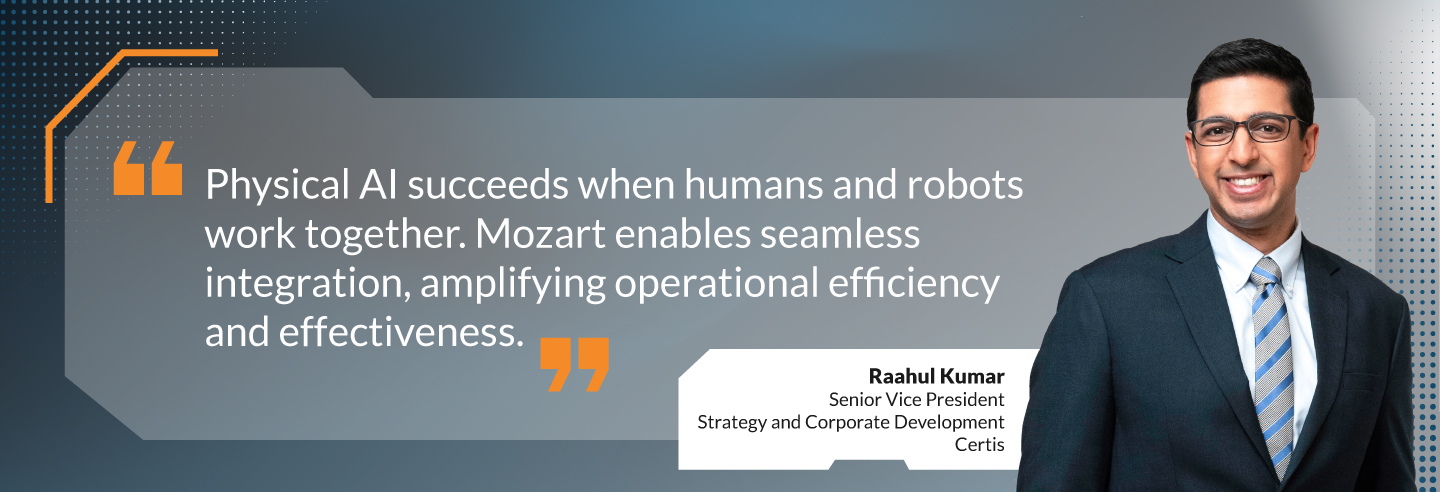Physical AI in Action: How Singapore is Shaping the Future of Robotics
10 October 2025

Written by Raahul Kumar, Senior Vice President, Strategy and Corporate Development, Certis
The Rising Integration of Physical AI
Artificial intelligence is no longer confined to digital systems. Giving machines the ability to sense, think, and act in dynamic, real-world environments, that’s what physical AI is all about. From humanoids to quadrupeds, robots are moving beyond structured factory floors into airports, campuses, shopping malls, and public safety domains, where unpredictability is the norm.
As one of the world’s most connected innovation hubs, Singapore is at the forefront of this shift. The country’s combination of robust infrastructure, diverse industries, and strong regulatory clarity makes it a proving ground for robotics. If robots can navigate Singapore’s crowded malls, rain-soaked streets, and complex security demands, they can be scaled anywhere in the world.
At Certis, we see physical AI not as machines replacing humans, but as trusted partners that multiply human effectiveness.
Certis’ Robotics Journey: From Hardware to Integration
Unlike traditional robotics companies, Certis does not build robots. Instead, we integrate hardware, software, and purposeful AI to deliver real-world outcomes for our customers.
Our robotics fleet today includes:
• Wheeled robots for predictable terrain and cleaning.
• Quadrupeds for inspections in restricted or uneven areas.
• Humanoids for customer-facing and human-centric environments.
The real value lies not in the form, but in how everything integrates.
Through Mozart®, our orchestration platform, these robots are embedded into one ecosystem alongside human officers. From AI-powered rostering to video analytics and autonomous workflows, Mozart® ensures robots and people work seamlessly, embedded into operations and not bolted on as standalone gadgets.
By focusing on integration over isolation, this has allowed us to scale physical AI across aviation, retail, and education in ways that deliver measurable value.
Real-World Deployments
Physical AI is not a lab experiment for Certis. It is live, measurable, and scalable today.
• Aviation Security: At one aviation site, quadrupeds inspected restricted areas in half the usual time, cutting inspection duration by 50% with greater reliability.
• Retail Operations (Jewel Changi Airport): Robotics and AI enabled a 67% manpower reduction while maintaining security and customer experience.
• Smart Campuses (Nanyang Technological University): We achieved a 26% manpower reduction by orchestrating humans, robots, and AI command centres in sync across 200 hectares.
• Enhanced Detection: In one case, a robot’s vision AI detected a smoking violation that went unnoticed in real time, augmenting human judgement with machine precision.
Across these deployments, we see the same pattern: robots extend reach, humans focus on higher-value decisions, and customers gain confidence through reliable, consistent service.
The Singapore Advantage: Why Here, Why Now
Singapore is uniquely positioned to be the launchpad for physical AI because:
• Certainty: Clear regulatory frameworks and reliable infrastructure.
• Confidence: Proving grounds that stress-test robots in complex, unstructured environments.
• Connectivity: A hub plugged into Asia and the world, digitally, physically, and commercially.
Iteration speed is also Singapore’s advantage. With close collaboration across government, industry, and universities, feedback loops move fast. And in robotics, speed of iteration is the true currency of innovation.
This makes Singapore both the benchmark and exporter, solutions proven here are deployed globally, from the Middle East to Australia.
A Playbook for Scaling Physical AI
From our experience at Certis, scaling physical AI requires more than hardware. It requires a disciplined approach:
• Integration, Not Isolation – Robots succeed when embedded into workflows and command centres, not treated as standalone gadgets.
• Change Management – AI reshapes roles. Training and rethinking jobs ensure adoption, retention, and new career pathways.
• Reliability First – Testing under tough, unpredictable conditions builds regulator and customer confidence.
• Scalability Through Standardisation – Modular software, consistent APIs, and hardware-agnostic AI stacks enable commercial rollouts across sites without reinventing systems each time.
This approach ensures that physical AI moves from pilots to mainstream deployment, creating lasting value for customers, employees, and shareholders.
Beyond Technology: Empowering People
At Certis, our mission goes beyond automation. Physical AI is about augmenting people, not replacing them.
Robots take on routine tasks such as inspecting restricted areas or patrolling large sites, while humans focus on roles requiring judgement, empathy, and decision-making. This shift not only enhances efficiency but also creates new career pathways in AI-enabled operations, boosting job satisfaction and retention.
The real measure of success is not just what robots can do, but how much more people can achieve because of them.
The Road Ahead
The world is entering an era of artificial intelligence and artificial labour. For organisations, the challenge is not whether to adopt robotics, but how to do so responsibly, reliably, and at scale.
Singapore provides the perfect launchpad. Certis provides the integration expertise, operational know-how, and people-first approach to make it real.
Together with our partners, we are shaping a future where humans and machines work in harmony - delivering safer, smarter, and better outcomes for all.